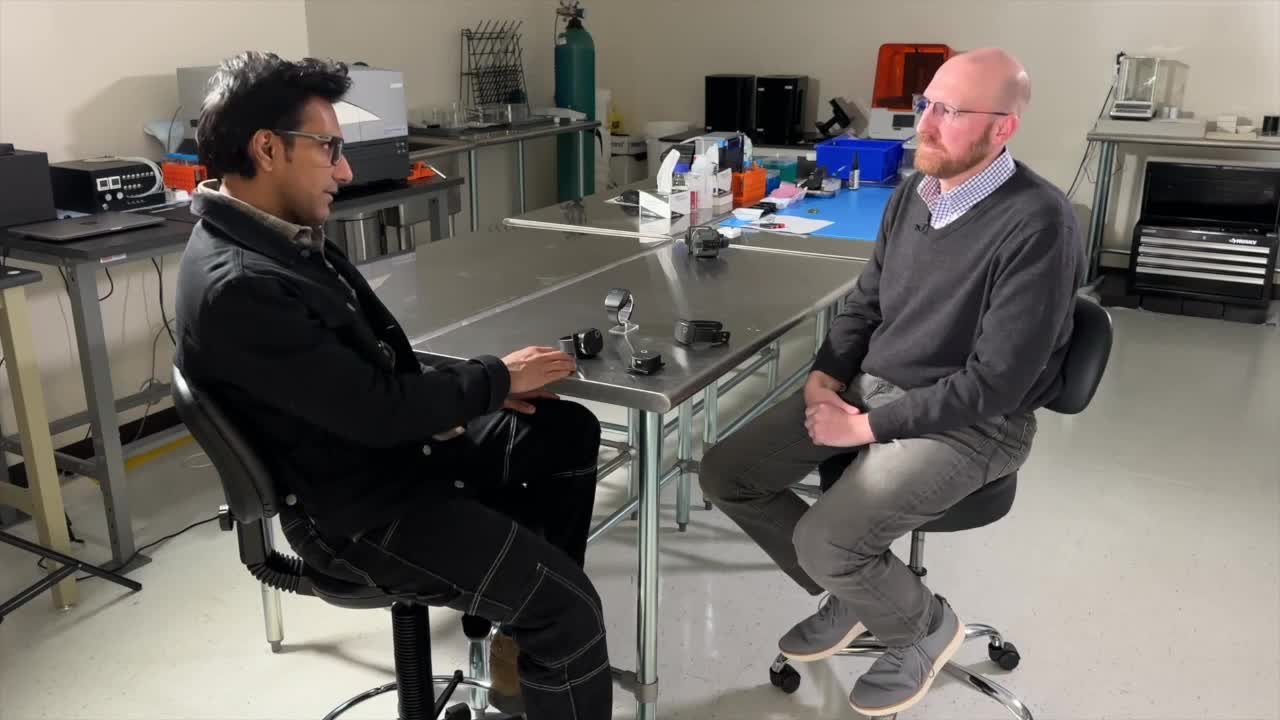A Michigan startup is revolutionizing alcohol monitoring with a wearable device no bigger than a smartwatch, aiming to remove the stigma associated with traditional ankle monitors.
WATCH FARAZ'S STORY IN THE VIDEO PLAYER BELOW
ArborSense, a University of Michigan spinout based in Ann Arbor, has developed G.R.A.D.E – graphene-based alcohol detection equipment – after nearly eight years of refining sensor-based wearable technology.

"We are working on making noninvasive detection sensors that can be used in a wide variety of industries and fields. Primarily right now we're focusing on criminal justice and rehabilitation, so people that have substance use disorder can wear one of our products. It's very discreet and it removes stigma," CEO Jason Tizedes said.
The transdermal device detects alcohol through the skin and is significantly smaller than existing technology. While current market devices require two drinks per hour before detecting alcohol, ArborSense's technology can detect one drink per hour.
"The technology that exists in the market right now needs to see two drinks per hour before it would be able to detect alcohol. We have been able to kind of isolate the alcohol in the system and really turn down or turn up the sensitivity on our sensor to be able to detect one drink per hour," Tizedes said.
Traditional alcohol monitoring devices have remained largely unchanged for two decades, resembling bulky ankle monitors that Tizedes compared to "1970s headphones." The new device has the same footprint as most smartwatches, making it easier for users to wear and adapt to daily life.
The technology addresses several market gaps. Current devices are approximately 10 years old, don't pair with smartphones, lack autonomous cellular connectivity, and haven't seen price reductions due to limited competition.
"There's really only one player. And because of that, the price hasn't ever come down," Tizedes said.
The cost comparison shows traditional devices range from $10 to $15 per day, while ArborSense's unit costs between $7 and $9 daily.
The device doesn't alert the wearer but instead sends instant notifications to monitoring authorities through text message, email, or automated phone calls. The system detects tampering attempts, including cutting the strap, undoing the buckle, or sliding objects underneath to prevent skin contact.
G.R.A.D.E wearables are available through court-mandated programs, but concerned parents and attorneys can also access them through a volunteer program.
To learn more, head to this link.
"This story was reported on-air by a journalist and has been converted to this platform with the assistance of AI. Our editorial team verifies all reporting on all platforms for fairness and accuracy."




